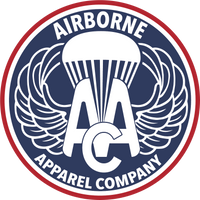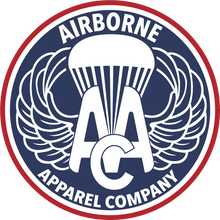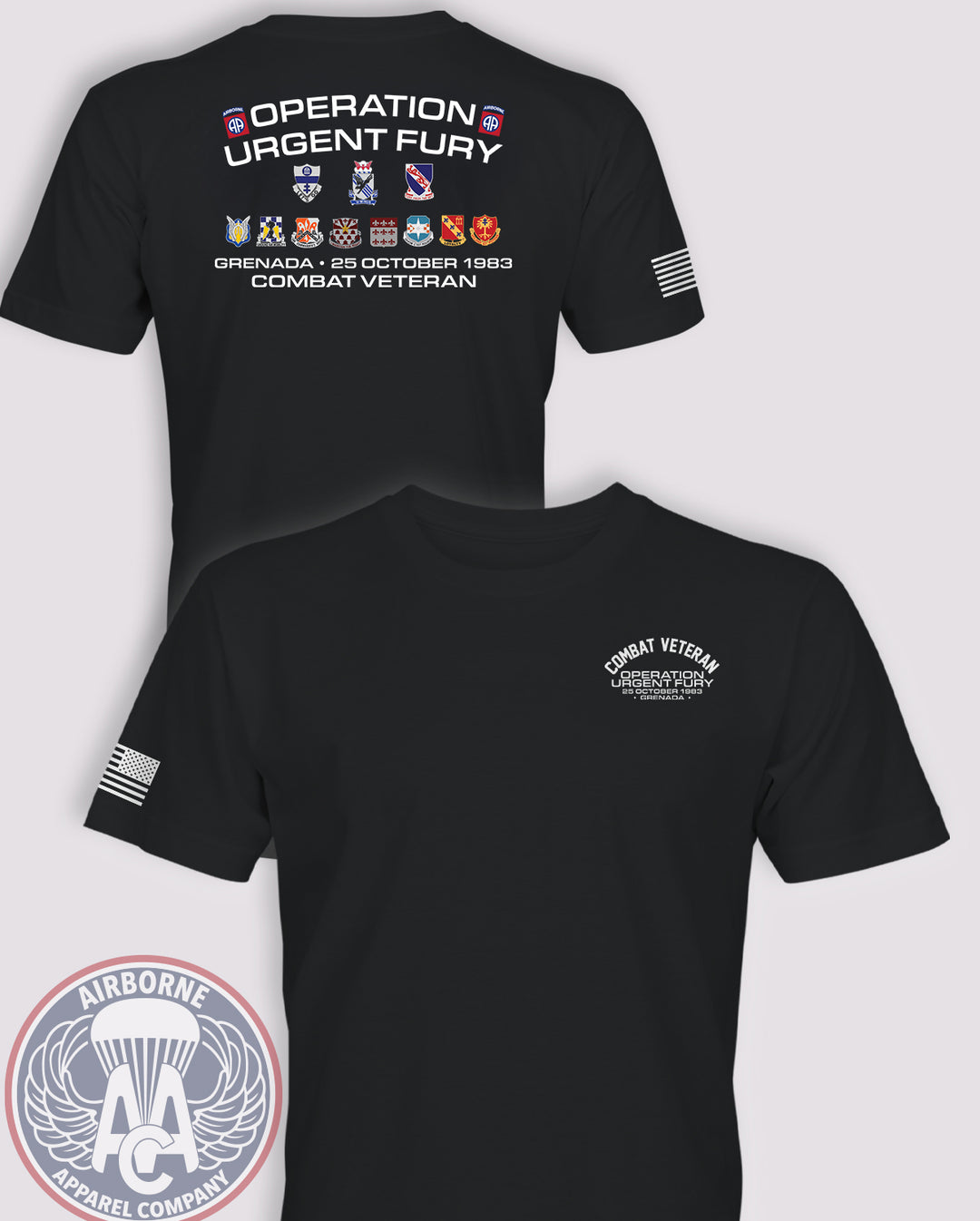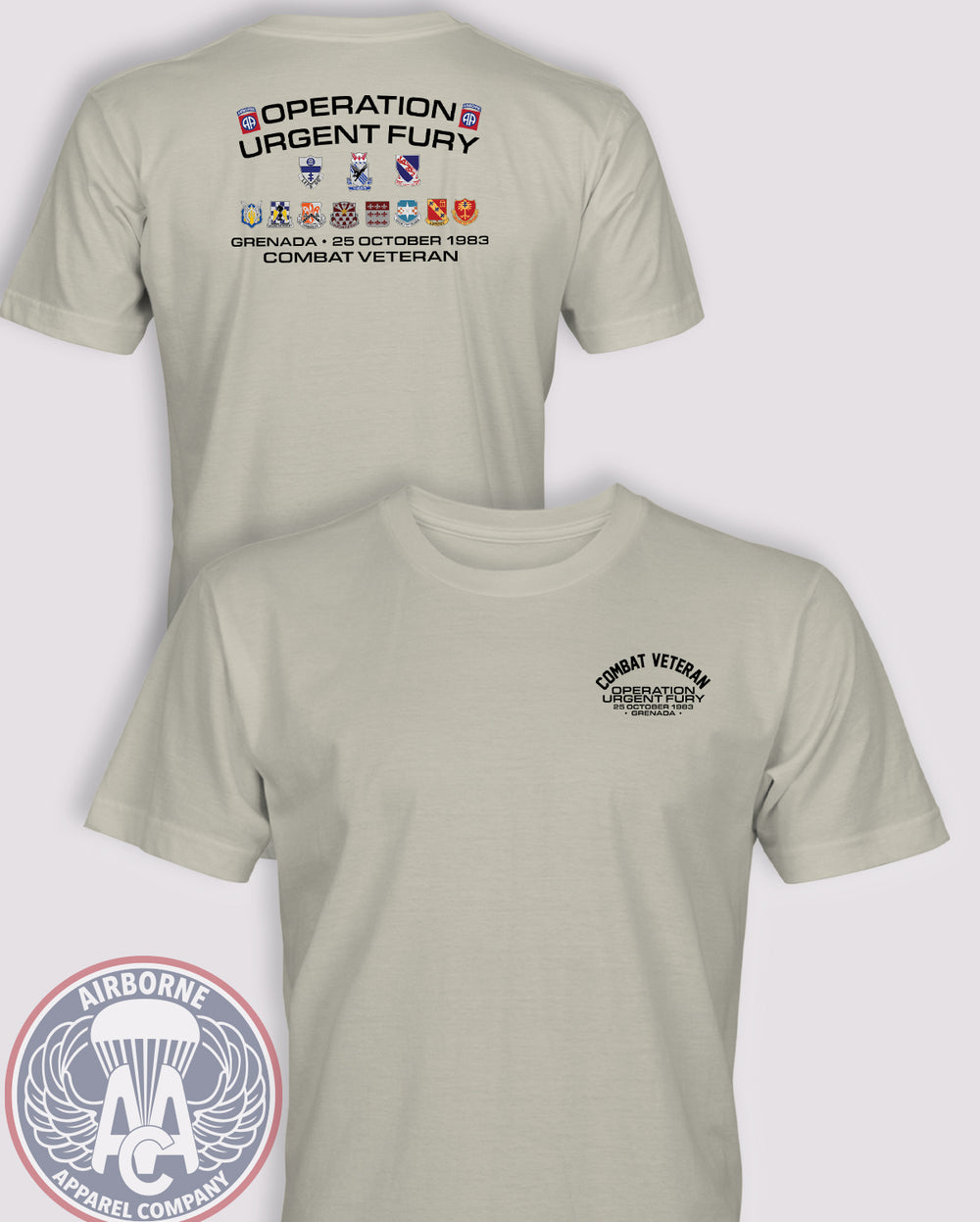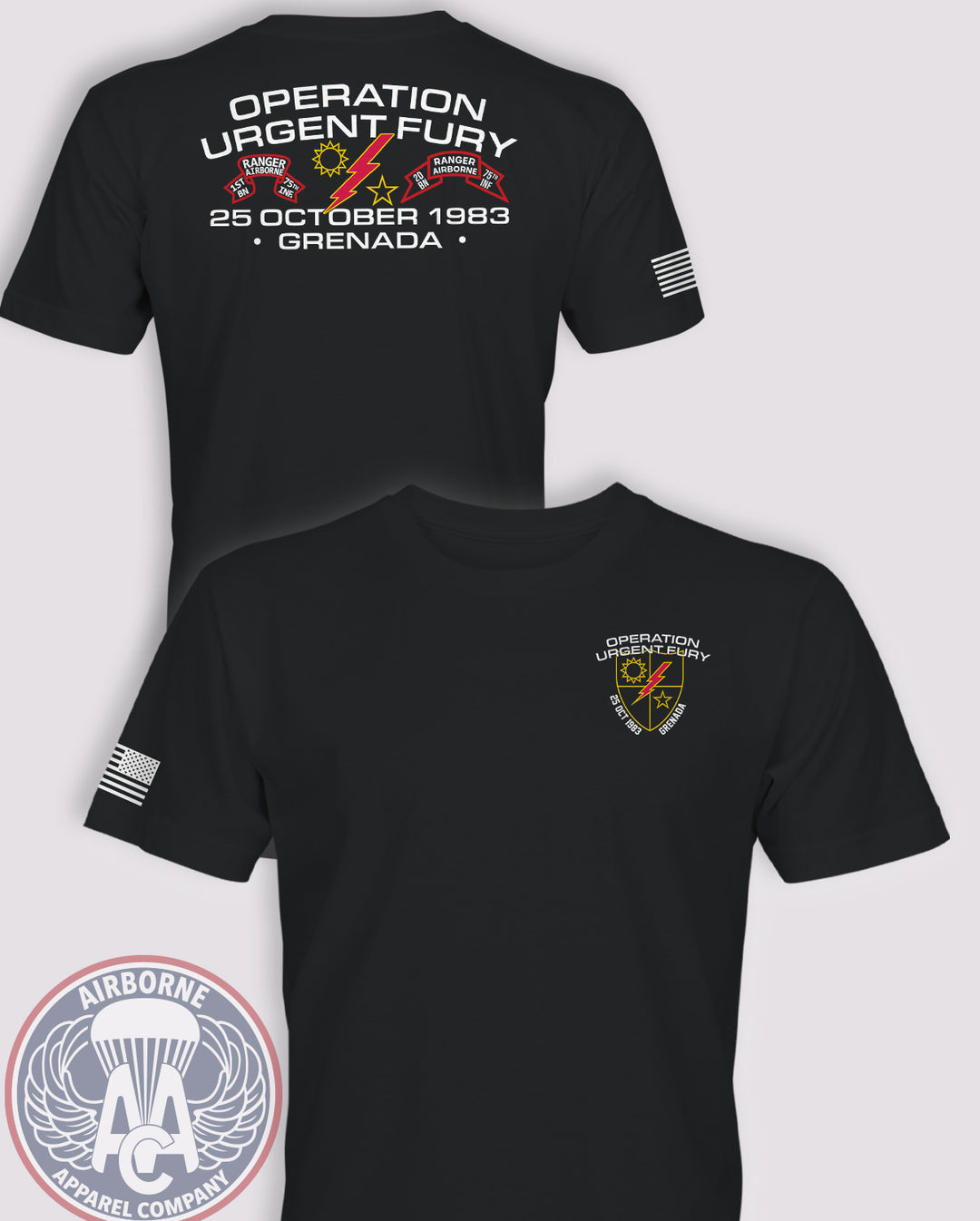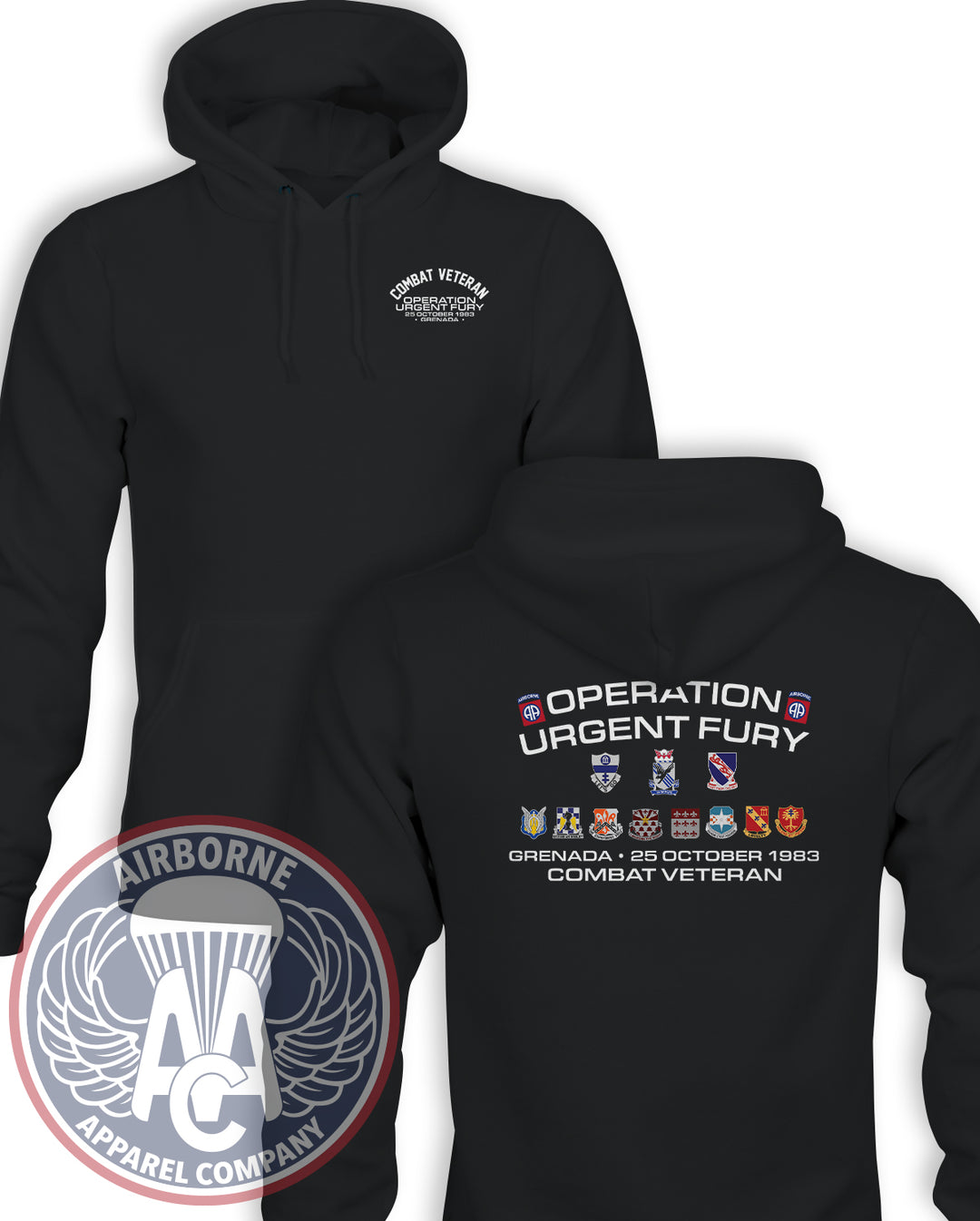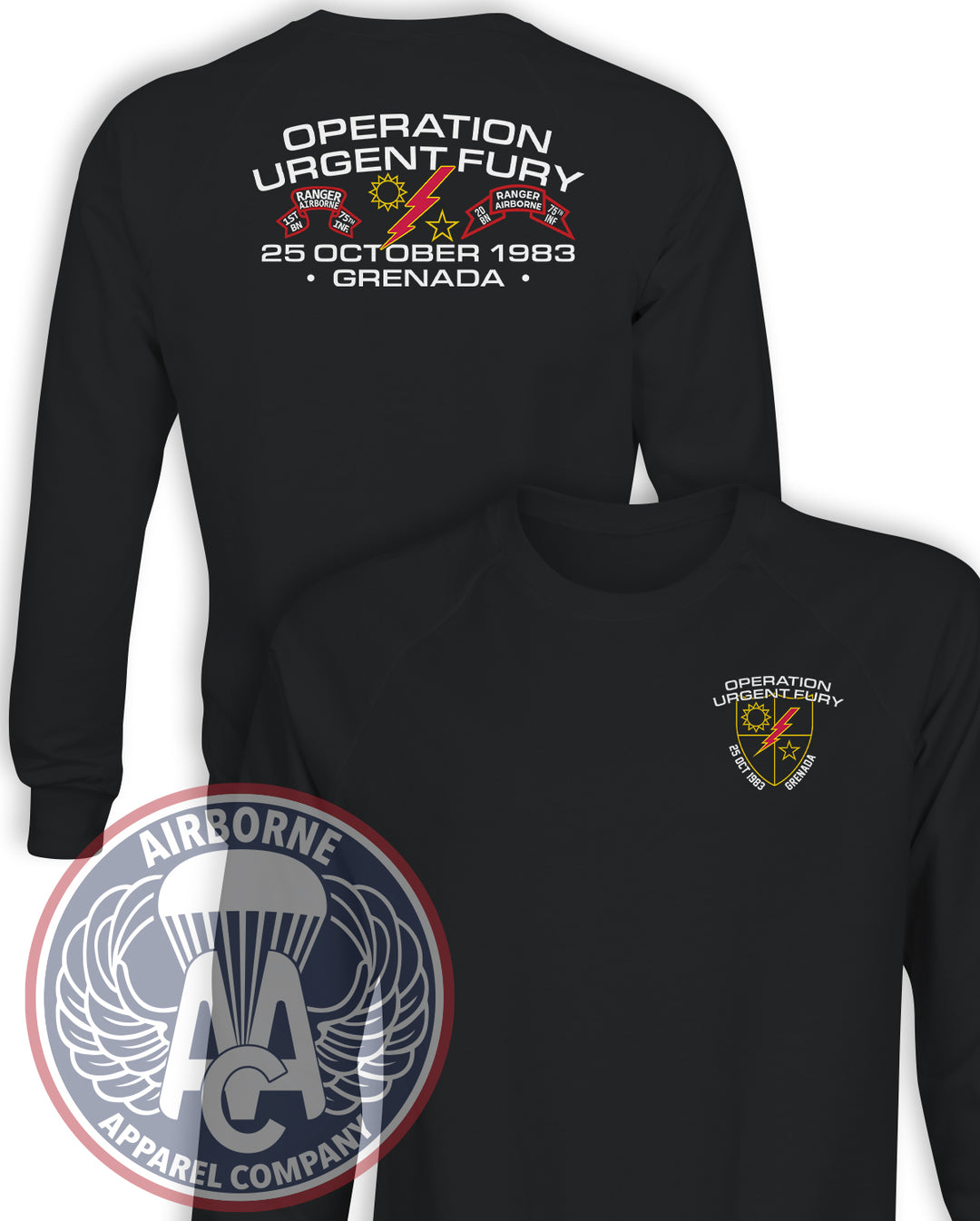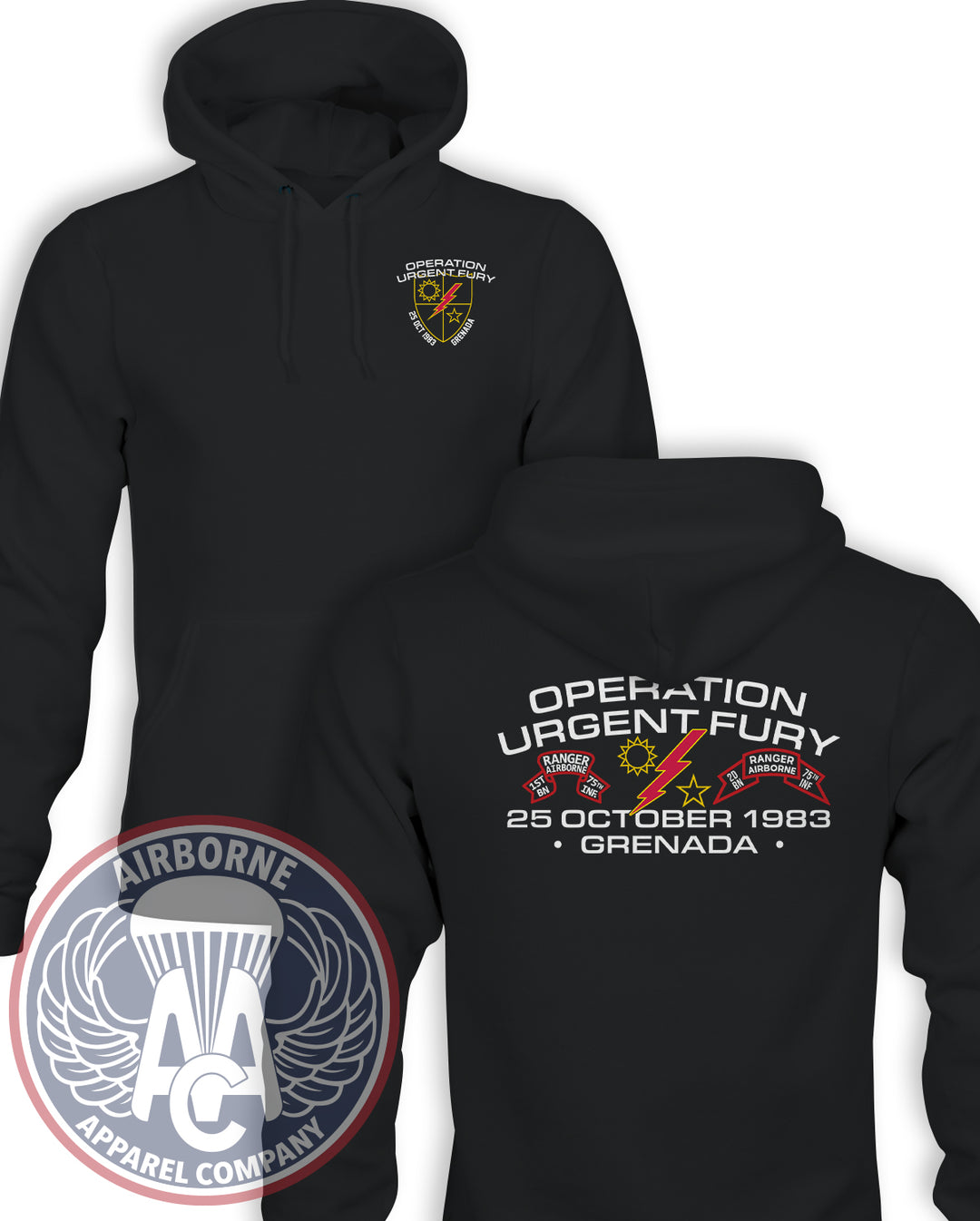Operation Urgent Fury, the U.S. invasion of Grenada in 1983, was a rapid airborne and amphibious assault that restored order after a Marxist coup. Airborne units including the 82nd Airborne Division and Rangers of the 75th Ranger Regiment spearheaded combat jumps, securing airfields and rescuing American citizens. Airborne Apparel Company is proud to offer reproductions and unique designs that celebrate the legacy of Operation Urgent Fury.
In October 1983, a Marxist coup overthrew the government of Grenada, raising concerns for U.S. citizens on the island, including American medical students. The instability also threatened regional security, prompting the United States, along with Caribbean allies, to launch a military intervention.
The Invasion
On 25 October 1983, the U.S. initiated Operation Urgent Fury, a joint operation involving the Army, Navy, Air Force, and Marine Corps. The mission objectives were to rescue American citizens, restore democratic government, and neutralize hostile forces.
Airborne & Special Operations Role
Airborne and special operations units played a decisive role:
-
75th Ranger Regiment: Conducted parachute assaults on Point Salines Airfield, overcoming heavy resistance to secure the runway for follow-on forces.
-
82nd Airborne Division: Rapidly deployed from Fort Bragg, with paratroopers jumping into Grenada to reinforce Rangers and expand control of key terrain.
-
Special Operations Forces (Delta Force & SEAL Teams): Carried out high-risk missions to secure hostages and strategic sites, though some teams faced significant casualties under heavy fire.
These airborne operations highlighted the speed, adaptability, and firepower of America’s rapid deployment forces.
Combat & Outcome
Despite tough fighting against entrenched Grenadian and Cuban forces, U.S. troops secured the island within days. Over 7,000 U.S. and allied troops participated in the operation, facing opposition from about 2,000 Grenadian soldiers and 700 Cuban troops. By 2 November 1983, major combat operations ended.
The mission successfully rescued nearly 600 U.S. citizens, restored a pro-democracy government, and reasserted U.S. credibility in the Caribbean. However, the operation also exposed problems in joint military coordination, leading to reforms that shaped future U.S. military operations.
Identity & Legacy
-
Date: 25 October – 2 November 1983
-
Key Airborne Units: 75th Ranger Regiment, 82nd Airborne Division
-
Motto: Embodied the Ranger creed, “Rangers Lead the Way,” and the 82nd’s “All American” tradition
-
Unique Distinction: First large-scale U.S. airborne combat jump since Vietnam
-
Aftermath: Directly influenced the Goldwater–Nichols Act (1986), improving joint command and interoperability
Enduring Significance
Operation Urgent Fury demonstrated the speed and effectiveness of airborne and special operations forces. The Rangers and 82nd Airborne proved the enduring value of parachute assaults, and the lessons learned reshaped U.S. joint warfare for decades to come.
